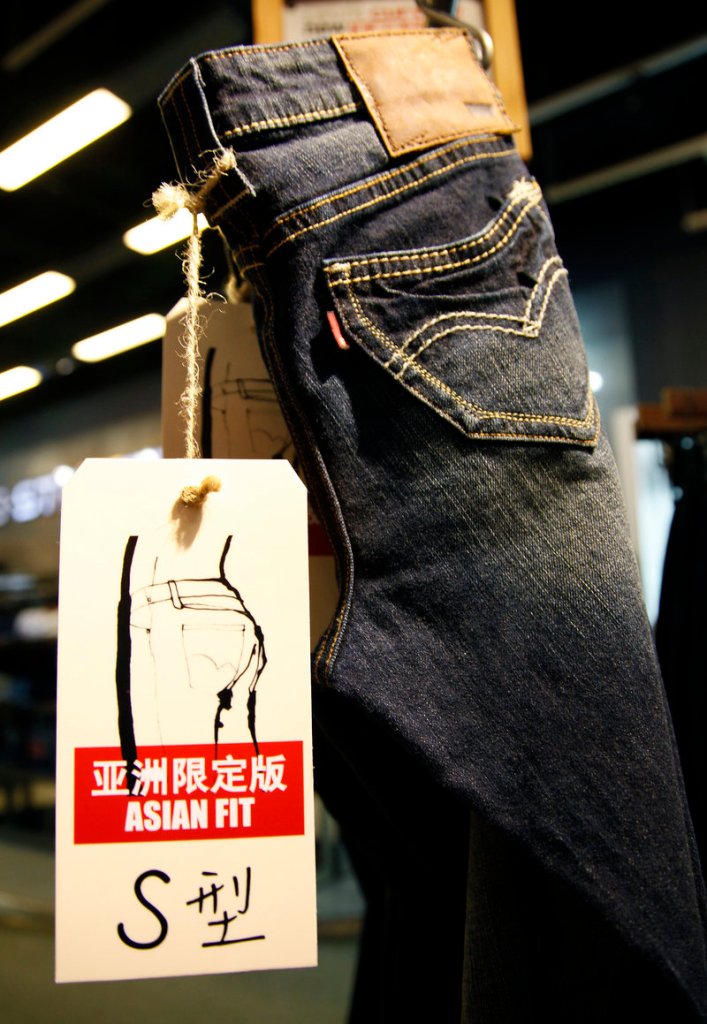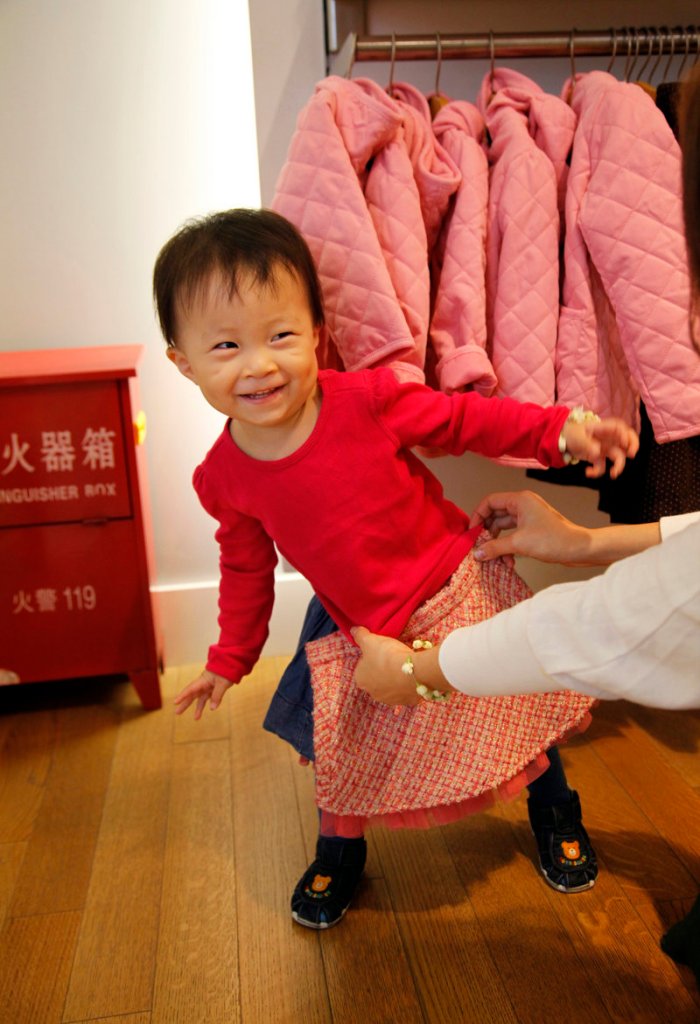SHANGHAI — The jeans are stiletto-thin — you won’t find baggy pants on these racks — and the customers squeezing into them are looking for denim that makes a bold statement.
“She looks like she has attitude,” said Mike Dai, eyeing his girlfriend, Amy He, after she wiggled into a narrow pair of Levi’s on a September afternoon in a high-end mall.
The brand is all-American but the San Francisco-based jeans-maker is offering up clothes that are all-Asian — pants designed in Hong Kong with an edgy, worn-and-torn finish that can sell for as much as $149 a pair.
As the American market continues to sputter, and China’s continues to boom, U.S. retailers are updating business plans to include the world’s second-largest economy as well as the rest of growing Asia. Just as Louis Vuitton, Gucci and Apple have erected temples of capitalism in cities like Shanghai and Beijing, Western apparel makers are infusing their clothing lines with Asian sensibilities in look, feel and size while embarking on aggressive store campaigns in this part of the world.
“You can see the power of scale and the power of the rapidly rising affluent,” said Aaron Boey, Levi’s head of Asia Pacific. “China is one of the top three markets for us. It’s the fastest-growing market we have.”
Last year, Levi Strauss launched an entirely new line — Denizen — in China before rolling it out in Target stores in the United States in August. It’s the first time a Western clothier has done that, signaling the new economic might of the East, experts say.
“China is a more important market now for all these companies,” said James Roy, a retail expert with the China Market Research Group. “It’s been a source for a lot of their global growth in the last two, three years. This is only going to happen more and more.”
While Levi’s has been in China for a decade, Gap, also based in San Francisco, is playing catch-up. Since November, it has opened seven stores on the mainland, including a 12,000-square-foot outlet in Shanghai’s upscale Hong Kong Plaza, as part of a larger strategy to beef up its presence across Asia. In Vietnam, the first Gap franchise opened in Ho Chi Minh City at the end of September — and two more will follow in the country’s commercial hub before the year’s end, while another is planned for Hanoi in 2012.
“Asians are very aspirational,” said Danreb Cartagena Mejia, marketing director for Imex Pan Pacific, the Vietnamese conglomerate that has a franchise agreement with Gap. “They have always wanted to have this,” he added, nodding at the Ho Chi Minh City store opening celebration, an event that resembled a movie premiere with trays of champagne and mint vodka being passed and famous Vietnamese actors, models and singers on hand. “Now they can buy it.”
Gap’s China campaign, in which 14 to 15 stores will be open by the end of 2011, features photographs taken by Annie Leibovitz and is part of a campaign to expand its international business. Online and international sales accounted for 22 percent of the company’s business last year and Gap wants to increase that to 30 percent by 2013.
Gap’s Asia push comes as it is pulling back in North America, with plans to shrink its stores from 889 as of mid-2011 to 700 outlets by the end of 2013. That will be a 34 percent reduction in Gap North America stores from 2007. “There are big growth opportunities for us internationally,” Gap Chief Executive Glenn Murphy told analysts recently, singling out not only China but also Indonesia, Singapore, Vietnam and Cambodia.
China, on the verge of becoming the world’s largest luxury market, is key to the company’s global expansion, said Redmond Yeung, president of Gap China. By 2020, Credit Suisse predicts China will overtake the United States as the world’s largest consumer market, accounting for nearly a quarter of all global private spending.
“If we can get just 1 percent of China, that is 13 million customers,” he said. “That shows you how huge this market can be.”
Chinese, Yeung said, spend about 30 percent of their income on clothes, while Americans dole out about 8 percent. While Americans on average make significantly more than most Chinese, the incomes of people in Asia are on the rise.
“Here in China or Hong Kong, we tend to live in smaller homes,” he said. That means Asians are more apt to go out. “So you need a lot more clothes,” Yeung added. “The traffic that comes through our doors (in China) is phenomenal.”
Copy the Story Link
Send questions/comments to the editors.




Success. Please wait for the page to reload. If the page does not reload within 5 seconds, please refresh the page.
Enter your email and password to access comments.
Hi, to comment on stories you must . This profile is in addition to your subscription and website login.
Already have a commenting profile? .
Invalid username/password.
Please check your email to confirm and complete your registration.
Only subscribers are eligible to post comments. Please subscribe or login first for digital access. Here’s why.
Use the form below to reset your password. When you've submitted your account email, we will send an email with a reset code.